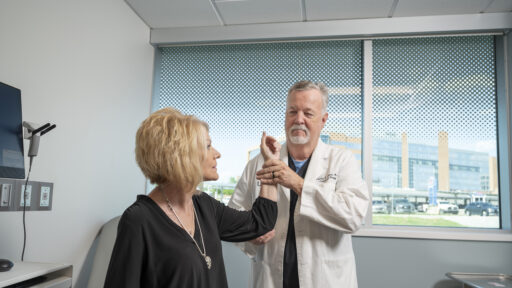Description
Dr. Robert D. Martin discusses when you should consider bunion treatment and how they are certain misconceptions about bunion surgery but that it is a great option for those suffering.
Video Player
Transcript
One of the most common conditions we see in clinic males and females but particularly females is a bunion deformity which is a big bump on kind of the inside aspect of your great toe joint. Often times there’s a strong genetic predisposition to having a bunion. Sometimes it can be related to wearing a very narrow shoes for a long period of time and one of the big questions we get asked is well should I have my bunion fixed. Cosmesis alone is probably not the best indication to have your bunion fixed but often times certainly does play into the decision. A painful bunion is certainly an indication to proceed with bunion surgery and also if the bunion has progressed that you develop any lesser toe deformity particularly the second toe that’s a bunion that we often times wilrecommend surgical treatment for. One of the biggest myths that I often hear when people come to clinic specifically to bunions is that bunion surgery hurts so bad that it’s unbearable and that nobody that they know that has had bunion surgery would ever have it again. Although surgery does cause some pain we’re able to with our anesthesia team almost always provide regional anesthesia pre-operative nerve blocks and a variety of modalities that really control the pain specific to bunion surgery and really any lower extremity surgery at all. Bunion surgery has certainly
advanced a lot in the past several years. A lot of marketing with lapiplasty MIS bunions, there’s a variety of techniques which we offer patients just depending on the severity of their deformity. These are all surgeries that we perform and that I perform and that I really enjoy doing. So bunion surgery is almost always outpatient surgery. It typically takes anywhere from 30 minutes to an hour just depending on if any additional surgeries need to be performed. One of the most common conditions that we see in addition to a bunion deformity is a hammer toe deformity most commonly of the second toe and often times that’s treated at the same time as the bunion. A bunionette deformity as the name implies is essentially a little bunion but it’s more commonly or always
seen on the outside of your foot as opposed to a bunion which is associated with the big toe or
great toe a bunionette deformity is on the outside of the foot at the base of the fifth toe.



